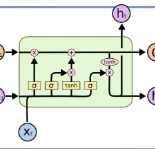Over the last few years, social media has evolved into a medium for expressing personal views, emotions, and even business and political proposals, recommendations, and advertisements. We address the topic of identifying emotions from text data obtained from social media posts like Twitter in this research. We have deployed different traditional machine learning techniques such as Support Vector Machines (SVM), Naive Bayes, Decision Trees, and Random Forest, as well as deep neural network models such as LSTM, CNN, GRU, BiLSTM, BiGRU to classify these tweets into four emotion categories (Fear, Anger, Joy, and Sadness). Furthermore, we have constructed a BiLSTM and BiGRU ensemble model. The evaluation result shows that the deep neural network models(BiGRU, to be specific) produce the most promising results compared to traditional machine learning models, with an 87.53 % accuracy rate. The ensemble model performs even better (87.66 %), albeit the difference is not significant. This result will aid in the development of a decision-making tool that visualizes emotional fluctuations.
翻译:过去几年来,社交媒体已发展成为表达个人观点、情感、甚至商业和政治提议、建议和广告的媒介。我们讨论了从诸如Twitter等社交媒体文章中获得的文本数据中识别情感的问题。我们采用了不同的传统机器学习技术,如支持矢量机(SVM)、Nive Bayes、决定树和随机森林,以及LSTM、CNN、GRU、BilSTM、BiGRU等深层神经网络模型,将这些微量推文分为四种情感类别(fear、Anger、Joy和Sadness )。此外,我们建立了BILSTM和BIGRU的元素组合模型。评估结果表明,与传统机器学习模型相比,深度神经网络模型(BIGRU)产生的最有希望的结果是87.53%的精准率。元素模型表现得更好(87.66%),尽管差异并不显著。这将帮助开发一个能直观情感波动的决策工具。





